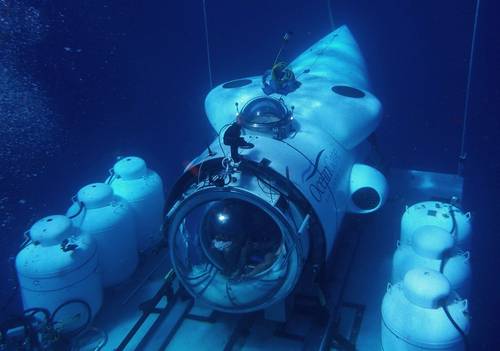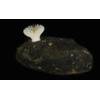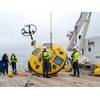OceanGate to Build Two New Submersibles
OceanGate said it plans to build two additional manned submersibles for deep ocean exploration and commercial operations to the Titanic wreck site and beyond.
The Everett, Wash.-based company, which already owns and operates a fleet of three manned submersibles rated between 305 meters to 4,000 meters, said it has begun the construction planning for two subs rated for even greater depths in response to increasing demand for commercial and private access to manned submersibles.
“Increasing demand for Titanic missions, deep-sea research and environmental supervision of deep-sea mining have further reinforced the business case for adding to our dive capacity,” said Stockton Rush, CEO, OceanGate. “Using a new aerospace manufacturing vendor and ensuring aerospace level quality and control will provide a depth capability of 6,000 meters using the same thickness of carbon fiber as Titan (Cyclops 2), and will allow the new OceanGate submersibles to reach 98% of the ocean.”
The new Cyclops-class subs Cyclops 3 and Cyclops 4 will be built using OceanGate's innovative carbon fiber and titanium design to meet increasing expeditionary, research and commercial demand for deep-sea manned submersibles. OceanGate said it is in discussions with two aerospace carbon fiber suppliers and manufacturers.
“Our second Cyclops-class submersible, Titan, has validated not only the carbon fiber and titanium design, but also the OceanGate real-time hull health monitoring system,” Rush said
The 4,000-meter-rated Titan debuted in 2018, following more than four years of development, engineering, testing and construction. Utilizing co-located acoustic sensors and strain gauges throughout the pressure boundary, its real-time hull health monitoring system makes it possible to analyze the effects of changing pressure on the vessel as the submersible dives deeper, and accurately assess the integrity of the structure. This onboard health analysis monitoring system provides early warning detection for the pilot with enough time to arrest the descent and safely return to surface.
“Mission specialists and partners are supporting our quest to make deep ocean exploration more safe, accessible, available and affordable, not only to scientific, governmental and commercial organizations, but also to citizen explorers,” Rush said.
The OceanGate CEO said the company has seen increased interest in a number of areas. “With the recent news that the Titanic shipwreck is deteriorating quickly, we have received more interest in our Titanic Survey Expeditions,” he said. “In addition, ocean habitat research and the discovery of valuable undersea resources are also driving increased demand for manned submersibles.
While the two new submersibles are in production, OceanGate dive operations will continue throughout 2020 utilizing its three existing 5-crewmember submersibles, Titan, Cyclops 1 and Antipodes.
The company said it is currently accepting applications for expeditions for the Bahamas 2020 whale, shark and wreck missions with the University of The Bahamas and the Hudson Canyon Expedition off of the coast of New York City.















 August 2025
August 2025



